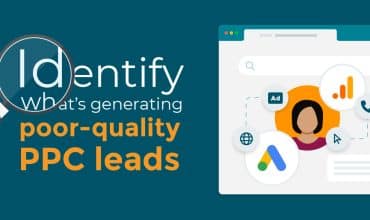5 content marketing goals high-performing agencies always set
Content marketing – it’s all about generating a pipeline of high-quality leads, warmed up and ready for sales teams to convert into loyal customers.
Or is it?
In fact, best-in-class content marketing should have multiple goals. And when setting goals for your client content marketing campaigns, you should be going way further than a simple lead generation focus.
Why have multiple content marketing goals?
As a marketing agency, you’ve got a lot to live up to in your clients’ eyes. Each quarter is yet another chance to prove your value, to prove to your client that their investment in you is paying off.
If you put all your eggs in the ‘we need to generate leads from content marketing’ basket, you’re setting yourself up for a fall. Granted, all that most clients care about is growing their businesses. But as a marketing consultant, it’s your job to educate them on the wider value of content marketing. And ultimately, having further reaching content marketing goals feeds into a healthier, fuller lead generation machine, anyway.
In a nutshell, when you have goals beyond leads and sales, you have many more routes to success. And a greater chance of impressing your clients and winning their long term business.
Taking content marketing goals to the next level
Beyond lead generation, here are our top five content marketing goals which you can use to enrich your client campaigns and show greater value for your fee.
1. Build a list of engaged email subscribers
It might be an oldie, but it’s a goodie. There’s no denying it – having a list of email subscribers and keeping them well-nurtured means you can maintain a connection with prospects for when they’re ready to buy. It’s still one of the best ways to stay present in prospects’ minds.
Vying for attention in a busy inbox is of course always going to be tricky. But if your messages and content are timely, relevant and useful every time, you’ll see good results from your email list building efforts.
These days, there are many ways you can collect contacts for your email subscriber list. Add a simple ‘enter your email here’ form to content such as:
- eBooks
- Online quizzes
- Product demos
- Brochures
The key here is to make sure you’re always providing value with the content you send in your emails. An engaged email subscriber list totally depends on every single email bringing something that piques the prospect’s interest. At the slightest sign of ‘filler’ or excessive amounts of sales-focused content, they’ll switch off.
2. Increase customer retention
You know that old saying: “It’s easier to retain customers than win new ones”? It’s true. And these days, there’s no excuse for not having a retention goal as part of your content marketing objectives.
So how can content help? Well, similar to nurturing new leads, you should be maintaining regular content touchpoints with existing customers to keep them engaged and loyal.
For many businesses, the first port of call for this is usually a well-structured, high-value blog. Even better, if you build this into a centralised resource ‘hub’ – somewhere all your educational content can live – it will become a go-to place that customers can dip into whenever they need to.
Fill it with how-to articles, industry trends insights, customer stories and inspiring, entertaining content. Basically, anything that helps existing customers do more with your client’s product or service, or simply helps them be more successful in their day-to-day work lives.
3. Develop brand authority
Using content marketing, you can also increase your brand authority. In fact, content is the perfect medium for doing this. It’s your chance to demonstrate your clients’ expertise in a way that’s useful and educational for customers. As a trusted and sought-after voice in the industry, your clients will get a host of business benefits – not least to their lead generation efforts, but to things like SEO, too.
There are a lot of ways that you can do this, such as:
- Using your marketing channels (email, social media etc) to showcase any positive coverage in industry publications
- Working with respected influencers and suppliers in your space to jointly market each others’ businesses
- Growing your associations with thought leaders in the industry by interviewing them and writing up their responses in your blog, or filming them for video content
When you use content like this to build brand authority, it helps to boost every marketing and sales channel – as well as strengthen relationships with others in the industry.
Attributing these activities has historically been tricky. But with software like Mediahawk, you can easily tag and track content – whether written articles, videos, social media posts, etc – and attribute them back to the originating source. Even physical events that draw interest in your client’s brand – such as sponsored industry roundtables – can be assigned unique static phone numbers as part of giveaways provided at the event – allowing you to track the ‘offline’ impact.
4. Better understand the needs of customers
With engaged prospects and loyal customers comes the opportunity to dig deep for insights to feed into future marketing activity.
This benefits your client campaigns on a number of levels, for example:
- Increasing engagement. When you have detailed insight into the preferences of customers, you can tailor the content you produce much more closely to their needs – and achieve much higher levels of engagement in the process.
- Cutting campaign costs. With those detailed insights, you can also target campaigns much more accurately and stop spending budget on activities that don’t work.
- Boosting revenue. Following on from cutting costs, if your campaigns are more targeted and effective, you’ll see a marked uptick in revenue and ROI, too.
- Getting buy-in. The more effective your campaigns become, the more the powers-that-be at your client’s business will see your value and remain bought-in to what you have to offer.
Your analytics tools are key here. With proper tracking – for example, UTM codes on all your campaigns and call tracking in place for your phone calls – you can gather a ton of information on what works best and what doesn’t.
You can also uncover insights into customer behaviour, which can give you ideas for new content. With phone calls, for example, you can follow a caller’s entire journey (perhaps they downloaded a particular e-book, then called your client to find out more) and understand exactly what information they found useful along the way.
Speech analytics helps you know the keywords and phrases that customers and prospects use in the real world. You can then feed these into your content marketing, using them for improving SEO or just simply to write more engaging and relevant copy.
5. Improve search engine rankings
We’ve touched on SEO a couple of times in the points above. Closely linked to lead generation as an ultimate goal, having your client’s website appear as close to the top of search results pages is an obvious win. “Just get me to the top of Google!” is a phrase you’ve probably heard many times before.
If you have everything else in this list in place first – an authoritative, respected brand; engaged prospects and customers; a good understanding of target audience needs; and stellar content – the SEO game will be a lot easier.
In fact, as pointed out in this article on how content marketing affects SEO, the two should go hand-in-hand. Get your content right, and it will help you be more visible. Improve visibility, and more people will see your content. And on it goes.
To create content that supports SEO, you need to focus on some key areas, namely:
- Making your content useful and relevant to the needs of your target audience
- Making it more valuable and useful than anything else on the internet
- Demonstrating credibility where possible – for example, including references to original research or real-world data or stories
- Making it memorable – whether that means something entertaining, surprising or inspiring that your audience will remember
Bringing it back to the ultimate goal
Remember at the beginning of this blog post we said that content marketing isn’t just about generating leads? Ultimately, that is the end goal, of course.
But it’s not the be-all and end-all of content marketing. If you can make content marketing work for you and your clients on multiple levels, you’ll see much richer results across the board.
And your clients will thank you for that.

Download the eBook and learn how you can grow your client roster, while increasing billing from existing customers.



